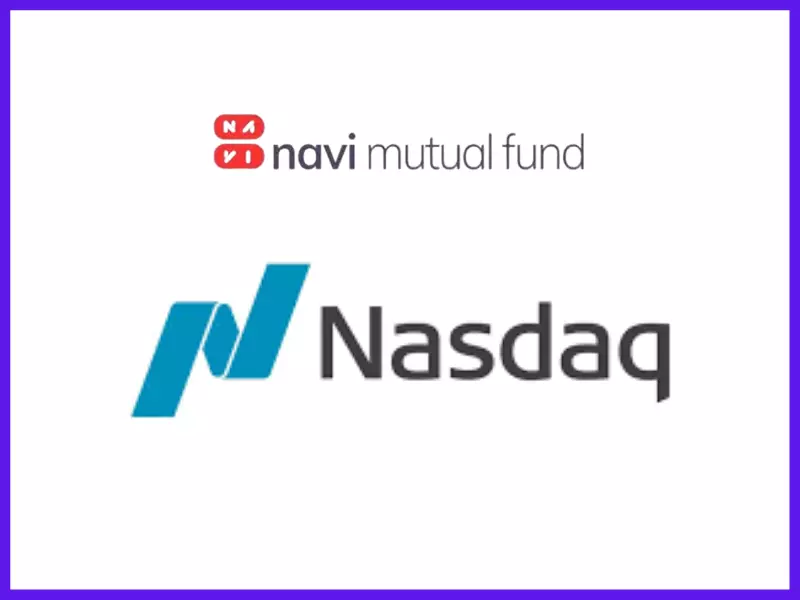
Navi mutual fund announced the launch of NAVI NASDAQ 100 Fund of Fund NFO. This direct growth equity fund will be available for investment from March 3, 2022, up to March 17, 2022. The fund will be managed by Pranav Vasa and has the potential to offer inflation-beating returns in the long run. Investors who want to tap into the growth opportunity offered by some of the future-ready companies that are part of NASDAQ 100 can invest in this FoF.
Investment objective of the fund
NAVI NASDAQ 100 FoF’s investment objective is to provide long-term capital appreciation through investment focus in units of international ETFs and/ or Index Funds that track the NASDAQ 100 index. This passive fund, instead of directly investing in stocks, bonds, or other securities, will adopt an investment strategy that focuses on maintaining a portfolio of other investment funds.
Why should you apply for the NFO?
- International markets exposure: This fund of fund will passively invest in high-quality ETFs and index funds that track the NASDAQ 100 index. The index, in turn, offers the potential of fetching stable and higher returns in the long run. Investors can expect returns commensurate with the NASDAQ 100 index.
- Low risk of diversification: Since the fund of fund will invest passively in ETFs and index funds that constitute a maximum of 25-30 stocks, it helps in reducing the risk of diversification.
- Focus on quality: By investing in this fund of fund, investors can avail the benefits of quality investments that offer the longevity advantage. Also, due to low churn in constituent stocks, the portfolio offers stability to investors. The NASDAQ 100 index is an equity index in the United States comprising the top 100 domestic and international non-financial companies that are listed on the NASDAQ stock exchange.
- Easy investment: It is easy to invest in this FoF NFO through the Fisdom app. Since this is a passive fund, investors need not worry about constantly tracking the fund’s portfolio composition, since it indirectly mirrors the benchmark index.
Comparative holdings of NASDAQ 100 index vs S&P 500 index: In the table below, investors can look at the comparative holdings of NASDAQ 100 and S&P 500. This can help in determining the potential returns that each may offer in the long run:
| Company | NASDAQ 100 | S&P 500 |
| Apple | 11.35% | 5.9% |
| Microsoft | 10.15% | 5.6% |
| Amazon | 7.66% | 3.8% |
| 7.66% | 2.1% | |
| Alphabet | 4.18% | 2.1% |
| Tesla | 3.87% | 1.7% |
| Berkshire Hathaway | – | 1.3% |
Source: ET Money
Fund details
| Scheme name | NFO details for NAVI NASDAQ 100 FoF |
| Type of Scheme | An open-ended fund of fund scheme investing in index funds and ETFs that track the NASDAQ 100 index. |
| Category of the scheme | Fund of fund |
| Benchmark | NASDAQ 100 |
| Plan options | Direct Plan |
| Fund Manager | Mr Pranav Vasa |
| Exit Load | NIL |
| Minimum Investment | Rs. 500 and any amount thereafter during NFOAdditional purchase of Rs. 100 and any amount thereafter |
| Expense Ratio | Not known yet |
| NFO Period | 03 Mar 2022 – 17 Mar 2022 |
Where can you invest in the NFO?Head over to the Fisdom App to invest in this NFO.
FAQs
NFO (New Fund Offer) is launched by the Asset Management Companies (AMCs) to generate funds for launching a new mutual fund. These funds are then pooled to buy the shares or other securities as per the fund’s mandate or the guidelines based on which the fund is launched. NFOs are like IPOs where all the relevant details of the funds are provided at the time of their launch and the units of the fund are usually set at Rs. 10 per unit for a subscription. SEBI guidelines allow the NFOs to be active for a maximum period of 30 days following which the units of the fund are traded based on their daily NAV.
NFOs, at the time of their launch, are launched in two categories namely close-ended funds and open-ended funds. The details of each type of fund are mentioned below.
Open-ended funds
The majority of mutual funds are launched as open-ended funds. Investors can subscribe to the fund at the nominal rate (usually Rs. 10 per unit) during the NFO period. After the NFO period, when the units are traded based on the daily NAV, the investors stand to gain huge capital gains depending on the performance of the fund.
Close-ended funds
Close-ended funds, on the other hand, do not allow the investors to subscribe to the fund after the NFO period is closed.
Investing in NFOs is a very good opportunity to maximize the returns as the units can be subscribed at nominal rates and the returns are potentially higher based on the prevailing NAV at the time of redemption. However, there are several points that need to be considered while subscribing to an NFO. Some of such points are highlighted below.
a)Track record of the AMC
NFOs are offered for the new mutual fund so no proven track record can be reviewed by investors to make an informed investment decision. The investors have to therefore rely on the reputation of the AMC and other details mentioned in the NFO to make an investment decision.
b)Expense ratio (if mentioned)
NFOs need a good amount of publicity to make the investors aware of the fund and the investment opportunity. It is therefore essential for the investors to check the expense ratio of the fund and ensure that it does not outweigh the net gains.
c)Check if the fund is in correlation to the existing portfolio
Recently there have been many NFOs in the market that investors can choose from. However, while selecting the fund the investors must check if the fund is not similar to an existing fund in their portfolio. For example, if the fund is a large-cap fund and the investor already has one or two similar funds in their portfolio, investing in another will not add much value to the net returns or the diversification of the portfolio. On the other hand, many NFOs can be sector-specific or country-specific. In such a case, investors have to check if the fund is in line with other factors like their risk-return profile and investment goals.
d)Review the SID carefully
Reviewing the SID (Scheme Information Document) is a crucial step that should not be missed by investors while investing in NFOs. It contains all the relevant information about the fund managers, their qualifications, and experience which is crucial for the funds’ performance. Other relevant information includes the investment profile of the fund, target sectors or securities, benchmark index, asset allocation ratio, etc. This helps the investors understand the returns expectation of the fund as well as the target investments where the fund will invest the pooled funds. Investors having a risk-return profile in line with that of the fund can thus invest in such funds.
Investment in NFOs can be done through two main routes i.e., the online or offline modes. The details of the same are mentioned below.
a)Online mode
The online mode of investment is suitable for investors already having a Demat account and a trading account. Investors can simply select the NFO and invest by selecting the number of units to invest and paying for the same through online payment modes available on the platform.
b)Offline mode
The offline mode of investment in NFOs is through registered brokers and distributors. Investors can contact their brokers and distributors providing them with the details of the amount to be invested and they can invest in the selected NFOs on their behalf. Investors can make hassle-free investments through such modes as all the necessary forms to be filled and the formalities to be met are looked after by these entities giving investors the benefit of ease of investment. The charges for such services are nominal when compared to the potentially high returns.


























